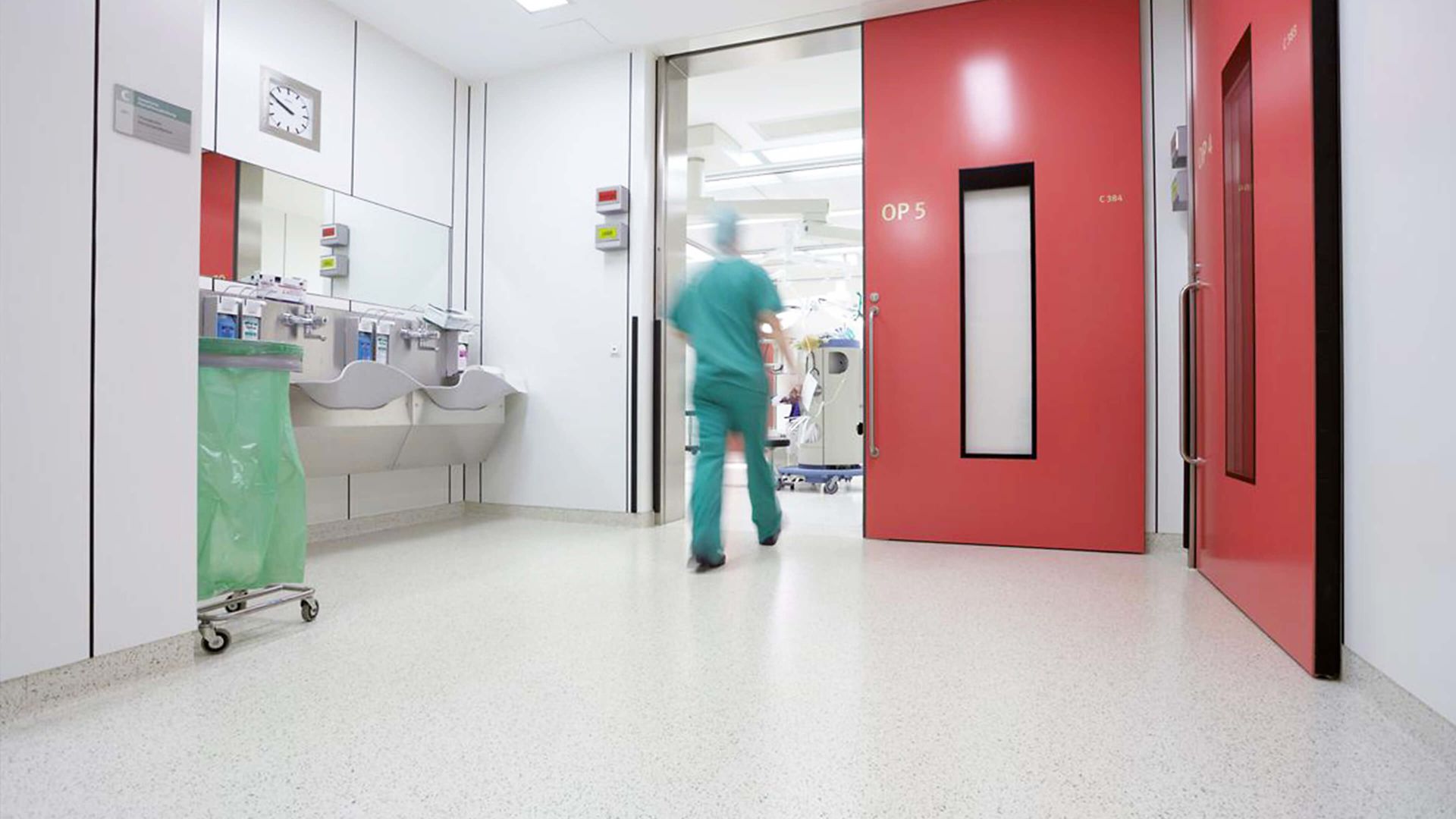RESINOUS FLOOR AND WALL SYSTEMS
FOR HEALTHCARE
COURSE DESCRIPTION
The selection of proper floor and wall systems for your healthcare design is a complex decision involving many environmental considerations. The right system protects your investment, the wrong system could result in costly repairs, damage to the building and its contents, possibly an early replacement, regulatory citation, or disruption to your business and occupants. During the presentation, the presenter will discuss the following learning objectives to get a better understanding of resinous floor and wall systems for healthcare environments.
LEARNING OBJECTIVES
- Defining Resinous Surface Systems
- Design Criteria for Finishes
- Resinous System Advantages
- Resinous Floor & Wall Systems by Area
- Lasting Impressions
ADVANTAGES OF RESINOUS FLOORING
FLOOR SAFETY & CLEANABILITY
With resinous flooring, you can easily adjust the level of non-skid. The photographs below are samples of colors and surface textures. On the far left-hand side, you can have textures as smooth as glass, or if we look on the far right-hand side, we can get textures from a non-skid standpoint.
These systems are designed for OSHA and ADA compliance.
OSHA Recommends - Walkways ≥ 0.5 or greater
ADA Recommends - Walkways ≥ 0.6, Ramps ≥ 0.8
INDUSTRY #1 PROBLEM
MOISTURE VAPOR EMISSIONS
Moisture vapor emissions effects all flooring.
Moisture in sheet decks cause a bubbling effect from moisture trapped underneath
Moisture in wood flooring causes a warping effect of the boards.
Moisture in resin causes peeling.
AESTHETIC FLOORING OPTIONS
SYSTEM TO MEET YOUR ENVIRONMENTS
COATINGS
SLURRIES
MORTARS
WALL SYSTEMS
Coastings - Tough, light-reflective systems to protect concrete substrate, reduce concrete dusting and maintenance costs. Available in a wide range of chemistries as well as static dissipative formulations.
Slurries - Medium film build to protect against moderate to heavy impact, abrasion and thermal shock environments. Resin rich system resists undercutting from water and chemical exposures.
Mortars - Heavy Duty Systems to protect against the most aggressive environments.
Wall Systems - Special High-Performance Coatings for resistance to frequent wash downs, sanitizers, thermal shock, and impact.
FREQUENTLY ASKED QUESTIONS
we showed that and their cove base is troweled in place and sometimes it's just terminated to an L strip or divide or strip at the top part of the cove. Sometimes it's tucked into a mortar joint and sometimes it's flared out in clean environments. We'll take a gel epoxy and feather the top part of the cove base and then run our wall system down over the top of it. So that you've got good integration between the floor and wall systems and there's no shelf for microorganisms to grow there.
Typically we're using flexible epoxy and it kind of depends upon what is going on with that crack. If it's active. And we have to saw, cut it. We might use a urethane elastomer. But typically, we're going to use a flexible epoxy and there's kind of a good, better, best scenario that we can use. We can just route it and fill it. That would be a good way of addressing it better would be to fill it, and then carry the flexible epoxy out on both sides of it. And then the best scenario would be to do both of those steps and carry the flexible membrane over the whole surface to provide maximum crack isolation.
Well, it's hard to say, because like I said, they've taken over a good portion of the market. They're a little bit more expensive in some cases than epoxy. It depends upon whether the floor's been installed as a mortar or if it's a self-leveling material, the self-leveling materials are more cost-effective because the installation, the production of the contractor on the installation side is more efficient. So that cost spread is less. But there's a lot of advantages to it. So that's why it's taken over a good share of the market today.
So clarification. I showed a poured resin system, which we'd have like silica flour as a thickening agent or filler. Sometimes they have fine sand in them. And where we're placing the mortar typically those have sand aggregates that are put into the resin and hardener which is the A and B components of your binder and then you're putting a gradation or different sized aggregates in there depending upon on the system that you're placing down.
ARRANGE A COMPLIMENTARY FLOOR AUDIT TODAY
Please fill out the form below to request a no-cost floor audit by a Sika industry expert.

